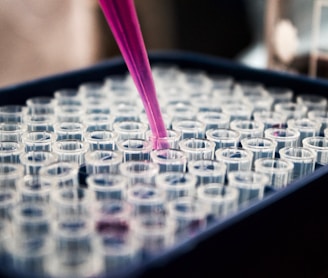The Future of Blood Tests: Diagnosing 50 Diseases from One Drop
SCIENCEALL BLOGS


Imagine going to a clinic, giving just a single drop of blood, and learning whether you’re at risk for cancer, heart disease, diabetes, or even neurological disorders, all within minutes. This vision is quickly becoming a reality, thanks to rapid advances in biotechnology, microfluidics, and biomarker research. The era of early, non-invasive, and wide-ranging blood diagnostics is not science fiction anymore. It is the future of medicine.
What makes blood such a powerful diagnostic tool
Blood carries nearly everything the body needs to function, oxygen, nutrients, hormones, immune cells, and waste products. It also holds biomarkers, which are measurable substances in the blood that indicate normal or abnormal processes. These include proteins, enzymes, genetic material, lipids, and other molecules that act like fingerprints for specific diseases.
Because blood interacts with every organ, it can offer insight into the entire body, making it the ideal medium for early disease detection and health monitoring.
The science behind diagnosing many diseases from one drop
Recent advances have made it possible to extract vast amounts of data from just microliters of blood. This is mainly due to progress in three areas:
Microfluidics: tiny lab-on-a-chip devices that process blood with incredible precision. These systems require minimal sample volume and allow for real-time analysis of multiple biomarkers at once. A 2022 paper in Lab on a Chip described a microfluidic chip capable of detecting 10 cardiovascular biomarkers from just one drop of blood in under 20 minutes.
Multiplexing: the ability to test for dozens of biomarkers simultaneously. For example, a 2023 study in Nature Biomedical Engineering introduced a nanoarray platform that identified over 50 disease-related proteins from one blood sample, including markers for cancer, infectious disease, and autoimmune disorders.
Machine learning and AI: artificial intelligence algorithms are now trained to recognize patterns in blood data that are invisible to the human eye. A 2021 study in The Lancet Digital Health showed that AI models analyzing blood biomarkers could predict diabetes and liver disease with over 90 percent accuracy.
Examples of what one drop can detect
Cardiovascular disease – Biomarkers such as troponin I and NT-proBNP can detect heart attacks, heart failure, and inflammation
Cancer – Circulating tumor DNA (ctDNA) and specific proteins like PSA, CA-125, and CEA are used to identify various types of cancer at early stages
Infections –Rapid detection of viral or bacterial DNA from pathogens such as SARS-CoV-2 or E. coli
Metabolic disorders – Glucose, insulin, HbA1c, and cholesterol levels can indicate diabetes and metabolic syndrome
Neurodegenerative diseases – Recent studies show promise in identifying Alzheimer’s disease by detecting proteins like beta-amyloid and tau in the bloodstream
Why this matters for the future of healthcare
Diagnosing multiple conditions from a single drop of blood could revolutionize medicine in several ways:
Early detection: Many diseases are treatable if caught early. With more accessible testing, people can get diagnosed before symptoms even appear
Personalized treatment: Knowing the exact markers involved in a person’s disease allows for more targeted therapy
Health equity: Low cost, portable blood tests can bring advanced diagnostics to remote areas and developing countries
Convenience: easier testing means better patient compliance and more frequent monitoring for chronic illnesses
Challenges to overcome
Despite the promise, some challenges remain. Small blood samples may have lower biomarker concentrations, making detection more difficult. There’s also the risk of false positives or overdiagnosis if too many markers are screened without careful interpretation. Regulatory approval and clinical validation take time, especially when so many conditions are involved.
Final thought
A single drop of blood has the potential to carry an entire health story. With continued innovation in microfluidics, AI, and biomarker science, the dream of diagnosing 50 diseases from one drop may soon be part of everyday healthcare. It will not only change how we detect illness, but it could also change how we live.